The Leopold & Loeb Trial

and Richard Loeb
"No client of mine had ever been put to death, and I felt that it would almost, if not quite, kill me if it should ever happen." – Clarence Darrow, discussing the Leopold and Loeb case in his autobiography, The Story of My Life (1932).
"I have a hanging case." – Prosecutor Robert E. Crowe after securing the confessions of Leopold and Loeb.
"The act which created a stir far beyond this country is so frightful, psychologically so incomprehensible, so singular in its unfoldment that, if a Poe or a writer of detective stories wished to unnerve his readers, no better tale could be invented, no knot harder to unravel; no events could follow each other more effectively than life, or rather disease, has here woven them together." – Maurice Urstein, Leopold and Loeb: A Psychiatric—Psychological Study 1 (1924).
Begins with witness lists. Includes Leopold and Loeb reaffirming their guilty pleas. Used with permission from HeinOnline.
Trial Transcript 2: July 26 - July 30, 1924.Used with permission from HeinOnline.
Trial Transcript 3: July 31 - August 5, 1924.Used with permission from HeinOnline.
Trial Transcript 4: August 6 - August 11, 1924.Used with permission from HeinOnline.
Trial Transcript 5: August 12 - August 14, 1924.Used with permission from HeinOnline.
Trial Transcript 6: August 15 and September 9, 1924.Note: Pages 3937 to 4115 are missing because after the hearing Clarence Darrow borrowed the part of transcripts that contained his closing argument from the court clerk but he never returned these pages. No library or archive appears to have these missing pages. Used with permission from HeinOnline.
Clarence Darrow's Plea for Mercy and Prosecutor Crowe's Demand for the Death Penalty.The plea for mercy by Clarence Darrow followed by Prosecutor Robert Crowe's demand for the death penalty. Also contains Judge Caverly's decision and pronouncement of sentence on September 10, 1924 and a short description of the facts of the case.
Sentencing Document. The Loeb-Leopold Case by Alvin V. Sellers (1926)."with excerpts from the evidence of the alienists and including the arguments to the court by counsel for the people and the defense." Includes closing arguments from Thomas Marshall, Joseph P. Savage, Walter Bachrach, Clarence Darrow, Benjamin C. Bachrach and Robert E. Crowe.
Nathan F. Leopold, Jr. brought an action for violation of the right of privacy against the author, publishers and several local distributors of a novel and a play, entitled "Compulsion," and the producer, distributor and Chicago area exhibitors of a related motion picture of the same name. The novel was written by the defendant Meyer Levin, who had been a fellow student of Leopold and Loeb at the University of Chicago. Levin also served as a reporter for a Chicago newspaper at the time of the crime. It was first published in hardcover in October 1956. Leopold won in the trial court which granted his motion for a summary judgment on the question of liability and reserved the issue of damages. On appeal the case was remanded back to the trial court where a succeeding judge vacated the summary judgment in favor of the plaintiff and granted the defendants' motion summary judgment and judgment on the pleadings. Leopold appealed this ruling to the Supreme Court of Illinois which ruled against him stating that "the core of the novel and film and their dominating subjects were a part of the plaintiff's life which he had caused to be placed in public view. The novel and film were derived from the notorious crime, a matter of public record and interest, in which the plaintiff had been a central figure." Furthermore, "The plaintiff became and remained a public figure because of his criminal conduct in 1924. No right of privacy attached to matters associated with his participation in that completely publicized crime."
Section 732 of the Illinois Criminal Code required the judge to examine witnesses in regard to aggravating and mitigating circumstances. The judge interpreted the statute to allow in the defense alienists' psychiatric testimony.
From the files of the Criminal Court of Cook County.
Professor Wigmore strongly criticizes the use of expert witnesses in the Leopold and Loeb trial and in trials in general. He was particularly disturbed by the defense's use of the nicknames "Dickie" and "Babe" in referring to the defendants because it was calculated to influence the judge. To Wigmore this reflected very badly on the medical experts and "The whole evil of expert partisanship is exemplified in this action of these eminent gentlemen." He believed that experts called by each party are obviously biased in favor of that party. The solution is to have the court call the experts to testify. Wigmore was the dean of Northwestern Law School from 1901 to 1929 and the author of the very influential "Wigmore on Evidence" treatise. Reprinted by special permission of Northwestern University School of Law, The Journal of Criminal Law and Criminology (volume 15, pp. pp. 341-43 (1924)).
The Loeb-Leopold Murder Of Franks In Chicago, May 21, 1924.Article detailing murder of Bobby Franks and subsequent investigation. Reprinted by special permission of Northwestern University School of Law, The Journal of Criminal Law and Criminology (volume 15, pp. pp. 347-405 (1924)).
Reassessing the Individualization Mandate in Capital Sentencing: Darrow's Defense of Leopold and Loeb by Scott W. Howe, 79 IOWA L. REV. 989 (1994).Detailed examination of Clarence Darrow's efforts to prevent Leopold and Loeb from being executed and the continuing relevance of the individualization mandate in capital punishment decisions. Reprinted with permission from the Iowa Law Review.
Debate with Clarence Darrow - Negative and Judge Alfred J. Talley - Affirmative. Judge Talley was on the New York Court of General Sessions. Foreword by Warden Lewis E. Lawes of Sing Sing Prison. The debate came about because Judge Talley sharply criticized Darrow for making excuses for crime.
Nathan Leopold's article about a rare bird published in January 1924 in The Auk, the prestigious quarterly journal of the American Ornithologists' Union. Leopold's article is often cited in bibliographies about the Kirtland''s Warbler which is a federal endangered species.
The Century MagazineThis exchange in the March 1925 edition of The Century Magazine highlights differing views on individual criminal culpability. Bridges presents an argument for moral responsibility; Darrow replies with his own view that individuals are subject to structural and environmental influences. Darrow concludes: "Those of us who believe that all conduct is the result of law, and that all men are controlled by their heredity and environment, are as anxious as the rest that crime should disappear. We, however, believe that it can be diminished, if not finally obliterated, only by finding the causes and intelligently treating these causes rather than rending and destroying in anger and hate." (Page 625).
New York Times article about endocrinology and crime. Clarence Darrow was a strong believer that endocrinology also referred to as the study of glandular activity could explain the causes of crime. Endocrine tests done on Leopold and Loeb were introduced into the sentencing hearing.
Pietro Aretino (April 20, 1492 - October 21, 1556) was an Italian author, playwright, poet and satirist. Leopold and a friend began work on translating this book but never finished it.
Rubaiyat of Omar Khayyam (translated by Edward Fitzgerald).Clarence Darrow quoted from Omar Khayyam twice during his plea for mercy on behalf of Leopold and Loeb. "The beauty of the Rubaiyat is Edward Fitzgerald's. . . . under the magic touch of Fitzgerald, it is not only one of the wisest and most profound pieces of literature in the world, but one of the most beautiful productions that the world has ever known. . . . Neither Omar nor Fitzgerald believed in human responsibility." Clarence Darrow, Facing Life Fearlessly.
The Ductless Glands by D. J. Cunningham.Chapter from Text Book of Anatomy.
The Endocrine Organs: An Introduction to the Study of Internal Secretion by Sir Edward A. SchäferSchäfer was one of the first modern leaders in experimental endocrinology. He was the first to discover the use the adrenal glands to change the blood pressure in an animal with a damaged endocrine system. In 1916, he became the first to propose the existence of a pancreas hormone to regulate body glucose, which he named insuline, from the Latin word for island, since he believed it originated in the islet (island) of Langerhans cells. Other scientists isolated this hormone and shortened the name to insulin. He was also an outspoken supporter of medical education for women. Schäfer had named one of his two sons Sharpey after his anatomy teacher, William Sharpey, at University College whom he greatly admired. Tragically, both of his sons were killed in World War I and Schäfer changed his own name to the hyphenated Sharpey-Schäfer.
A Shopshire Lad by A.E. HousmanA collection of poems written by the British poet, A. E. Housman and first published in 1896. Darrow quoted A Shopshire Lad in his plea to save Leopold and Loeb before Judge Caverly.
Foundations of Psychiatry by William Alanson White (1921).An attempt to formulate a "Philosophy of Psychiatry" written about three years before the Leopold and Loeb case. White was one of the main alienists for the defense.
Mechanisms of Character Formation: An Introduction to Psychoanalysis by William Alanson WhiteWilliam Alanson White was one of the main alienists for the defense.
The Glands Regulating Personality: A Study of the Glands of Internal Secretion in Relation to the Types of Human Nature by Louis Berman (1921).Berman was a prominent visionary of early endocrinology and a renowned physician and researcher at Columbia University.
Book review of Crime: Its Cause and Treatment by Clarence S. Darrow (1922).A critical review of Clarence Darrow's book. The reviewer refers to Darrow's theory about the causes of crime as the "mechanistic theory" and states "[t]he mechanistic theory is a dreary gospel."
Crime: Its Cause and Treatment by Clarence Darrow.Clarence Darrow's book setting forth his beliefs about crime and punishment. It was written about two years before the Leopold and Loeb case. Darrow was a proponent of the new field of endocrinology which focused on the function of the glandular system as an important factor in human behavior - including crime. Darrow refers to this new science in his book.
Criminology and Penology by John Lewis Gillin.Excerpt from 1926 book which briefly discusses Dean John Wigmore's criticism of the defense in the Leopold and Loeb case. Wigmore related the story of two eighteen year old girls who were arrested in Chicago for helping to murder an elderly lady. They were arrested after the defense's argument in the Leopold and Loeb case was published. The girls said to the police, "A cop told me they would hang Tony, but they can't; there had never been a minor hanging in Cook County. Loeb and Leopold probably won't hang; they are our age. Why should we?"
Mental Disorder and the Criminal Law: A Study in Medico-Sociological Jurisprudence by S. Sheldon Glueck (1927).S. Sheldon Glueck is the brother of Bernard Glueck, one of the defense alienists in the Leopold and Loeb case. He was a pioneer in criminology and a Harvard Law School professor for over 40 years. In this excerpt from his book, Sheldon Glueck is critical of Clarence Darrow's deterministic views about crime as expressed in Darrow's book Crime: Its Cause and Treatment. He says of Darrow "With commendable consistency, but absurd results, he there concludes that 'the criminal' is morally blameless." At one point professor Glueck asks, "What does Mr. Darrow propose to do with all these criminals?"
Short bio of Dr. Krohn, an alienist for the defense. Dr. Krohn was a target of Darrow's wrath during his closing argument.
John R. Caverly (1908).Short bio of John Caverly in 1908 when he was a city attorney for Chicago.
John Richard Caverly (1920).Short bio of John Richard Caverly who would later sentence Leopold and Loeb.
Robert E. Crowe (1920).Short bio of Robert Crowe from The Bench and Bar of Illinois.
Photos - Key Figures

Augustus Owsley Stanley served as a Representative and a Senator from Kentucky from May 19, 1919 until March 3, 1925. Photo taken at the Cosmos Club, Washington, D.C. Library of Congress Prints and Photographs Division, LC-DIG-npcc-26880.







"I want to tell you the real defense in this case, your honor. It is Clarence Darrow's dangerous philosophy of life. He said to your Honor that he was not pleading alone for these two young men. He said he was looking to the future; that he was thinking of the ten thousand young boys who in the future would fill the chairs his clients filled, and he wants to soften the law. He wants them treated not with the severity that the law of this state prescribes, but he wants them treated with kindness and consideration.
I want to tell your Honor that it would be much better if God had not caused this crime to be disclosed; it would be much better if it had gone unsolved, and these men went unwhipped of justice; it would not have done near the harm to this community that will be done if your Honor, as Chief Justice of this great court, puts your official seal of approval upon the doctrines of anarchy preached by Clarence Darrow as a defense in this case.
Society can endure, the law can endure, if criminals escape but if a court such as this courts should say that he believes in the doctrines of Clarence Darrow, that you ought not to hang when the law says you should, a greater blow has been struck to our institutions than by a hundred, aye, a thousand murders." Library of Congress Prints and Photographs Division, LC-USZ62-137475.






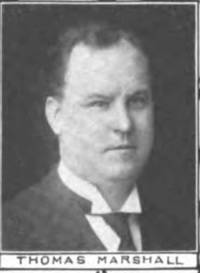
"If this is not a murder of the extreme type on the facts, then, of course, a lesser penalty than death can be invoked; but when months of planning, careful execution of every detail, a money motive, a kidnapping for ransom, the cruel blows of a sharp steel chisel, the gagging, the death, and the hiding of the body all appear, as they do here, the malice and deliberation take the crime out of the scale of lesser penalties and prescribe death."


Photos
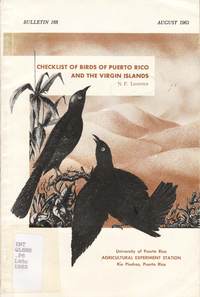

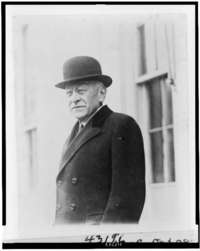
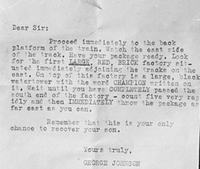


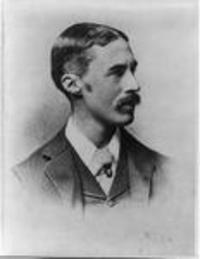





A tribute to him relates: "In 1926, the eighteen-year-old Goldberg, deeply affected by Clarence Darrow's defense of Loeb and Leopold, entered Northwestern Law School. John Henry Wigmore, Northwestern's dean, picked him out to help on the preparation of the Third Edition of Wigmore's Cases on the Law of Evidence. Proceedings in the Supreme Court of the United States in Memory of Justice Goldberg, Monday, October 15, 1990, volume 498 United States Reports xvii Photo from: Wikipedia: Arthur Goldberg













